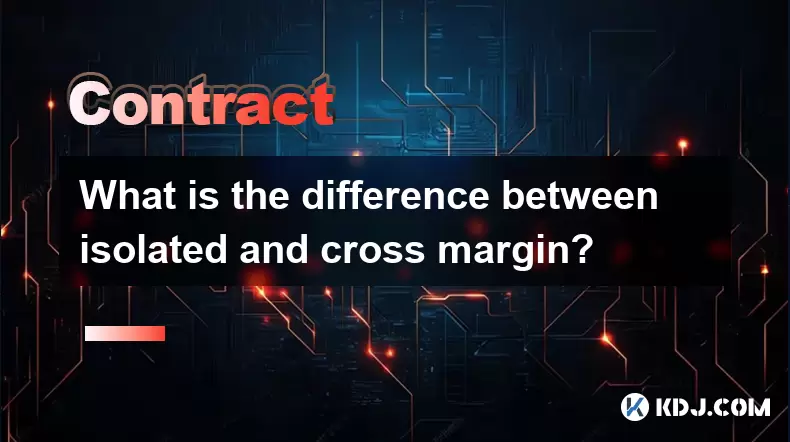-
 Bitcoin
Bitcoin $118,698.3676
0.16% -
 Ethereum
Ethereum $3,428.4877
5.97% -
 XRP
XRP $3.2496
9.52% -
 Tether USDt
Tether USDt $1.0002
0.00% -
 BNB
BNB $725.6930
4.36% -
 Solana
Solana $174.8923
4.52% -
 USDC
USDC $0.9997
-0.02% -
 Dogecoin
Dogecoin $0.2139
6.02% -
 TRON
TRON $0.3155
4.62% -
 Cardano
Cardano $0.8045
7.12% -
 Hyperliquid
Hyperliquid $46.6582
-1.72% -
 Stellar
Stellar $0.4676
0.80% -
 Sui
Sui $4.0143
0.38% -
 Chainlink
Chainlink $17.1546
2.97% -
 Hedera
Hedera $0.2458
3.27% -
 Bitcoin Cash
Bitcoin Cash $496.5967
-0.06% -
 Avalanche
Avalanche $22.8813
3.13% -
 Shiba Inu
Shiba Inu $0.0...01439
3.42% -
 UNUS SED LEO
UNUS SED LEO $8.8389
0.42% -
 Toncoin
Toncoin $3.2113
2.82% -
 Litecoin
Litecoin $101.2646
4.24% -
 Polkadot
Polkadot $4.2262
2.32% -
 Monero
Monero $340.4295
2.92% -
 Pepe
Pepe $0.0...01365
2.92% -
 Uniswap
Uniswap $8.9702
-2.78% -
 Bitget Token
Bitget Token $4.7675
2.00% -
 Dai
Dai $0.9998
-0.02% -
 Ethena USDe
Ethena USDe $1.0003
-0.04% -
 Aave
Aave $324.6394
-2.11% -
 Bittensor
Bittensor $433.6051
-0.88%
What is the difference between isolated and cross margin?
Cryptocurrency traders use margin to boost exposure with leverage, choosing between cross margin—which shares equity across positions—to reduce liquidation risk, or isolated margin, which limits losses per trade but requires careful management.
Jul 17, 2025 at 09:00 pm

Understanding Margin in Cryptocurrency Trading
In cryptocurrency trading, margin refers to the amount of funds a trader must deposit to open and maintain positions with leveraged instruments. Traders often use margin to increase their exposure to assets without committing large amounts of capital upfront. However, leverage comes with increased risk, which is why platforms offer different types of margin modes—isolated margin and cross margin.
Each mode has distinct features that affect how traders manage risk, liquidation levels, and profit/loss calculations. Understanding these differences helps traders choose the most suitable method for their strategy and risk tolerance.
What Is Cross Margin?
Cross margin allows traders to allocate all available equity in their account as collateral for open leveraged positions. In this setup, all positions share the same margin pool, meaning that profits or losses from one trade can affect others. This system provides flexibility by reducing the likelihood of liquidation since the platform uses the entire account balance to support open trades.
- Traders can utilize the total account equity automatically
- Liquidation is less likely compared to isolated margin
- Risk is spread across all positions
This approach is ideal for traders who want to manage multiple positions simultaneously without worrying about individual margin allocations. However, it also means that a significant loss in one trade could impact the entire portfolio.
What Is Isolated Margin?
Isolated margin restricts each position’s margin usage to a specific amount allocated by the trader. In this mode, each trade operates independently, and only the designated margin supports that particular position. If a trade incurs a loss, only the assigned margin is at risk, not the entire account balance.
- Margin allocation is manually set per position
- Losses are contained within individual trades
- Higher risk of liquidation on individual trades
This model is preferred by experienced traders who wish to tightly control their exposure on a per-trade basis. It offers more granular risk management but requires careful monitoring of each position’s health.
Liquidation Differences Between Cross and Isolated Margin
One of the most critical aspects of margin trading is avoiding liquidation, where the exchange forcibly closes a position due to insufficient funds. The liquidation mechanism differs significantly between cross and isolated margin.
Under cross margin:
- Liquidation occurs only when the entire account equity reaches the maintenance margin level
- The system uses all available funds to keep positions open
- Positions are generally safer from sudden market moves
Under isolated margin:
- Each position has its own liquidation threshold
- Only the allocated margin supports the trade
- A single adverse price move can trigger liquidation even if other positions are profitable
These distinctions make cross margin more forgiving for novice traders, while isolated margin gives advanced users better control over individual trade risks.
Practical Use Cases for Each Margin Mode
Choosing between cross and isolated margin depends largely on trading style, experience level, and risk appetite.
For example:
- A day trader managing multiple pairs might prefer cross margin to simplify risk management and avoid frequent manual adjustments.
- A hedger or arbitrageur may opt for isolated margin to ensure losses on one side of a trade don’t affect the other leg.
Some exchanges allow switching between margin modes on a per-position basis, enabling traders to adapt dynamically based on market conditions or strategy requirements. It's crucial to test both modes using demo accounts or small positions before committing significant capital.
How to Switch Between Margin Modes on Major Exchanges
Most major cryptocurrency derivatives platforms like Binance, Bybit, and OKX provide options to switch between cross and isolated margin. Here’s how to do it on some popular exchanges:
On Binance:
- Navigate to the futures trading interface
- Locate the position you want to adjust
- Click the “Margin Mode” button
- Choose either “Cross” or “Isolated”
- Confirm the change
On Bybit:
- Open the contract details panel
- Find the “Margin Mode” section
- Toggle between cross and isolated
- Set the desired isolation value if choosing isolated
On OKX:
- Go to the futures section
- Select the relevant contract
- Click “Edit Margin”
- Choose your preferred margin type
- Adjust parameters accordingly
It’s important to note that changing the margin mode may affect unrealized profits and liquidation prices. Always review the updated margin requirements after making any changes.
Frequently Asked Questions
Q: Can I lose more than my initial investment with cross margin?
No, most exchanges implement a clawback mechanism or insurance fund to prevent negative balances. However, in extreme market conditions, certain platforms may enforce auto-deleveraging (ADL), which could reduce your equity without direct liquidation.
Q: Does isolated margin allow higher leverage than cross margin?
Not necessarily. Leverage settings are usually adjustable regardless of margin mode. However, isolated margin enables precise control over how much leverage applies to each trade.
Q: Are there fees associated with switching between cross and isolated margin?
No, switching between margin modes typically does not incur additional fees. However, it’s always wise to check the fee schedule of the specific exchange you're using.
Q: Which margin mode is better for beginners?
Cross margin is generally more beginner-friendly because it reduces the chance of sudden liquidation by pooling resources. It simplifies risk management and avoids the need for constant manual adjustments.
Disclaimer:info@kdj.com
The information provided is not trading advice. kdj.com does not assume any responsibility for any investments made based on the information provided in this article. Cryptocurrencies are highly volatile and it is highly recommended that you invest with caution after thorough research!
If you believe that the content used on this website infringes your copyright, please contact us immediately (info@kdj.com) and we will delete it promptly.
- Maharashtra Government Nurses Launch Indefinite Strike: A Healthcare Crisis?
- 2025-07-18 04:30:13
- Hilbert Group, Syntetika, and Tokenization: Bridging DeFi and Institutional Finance
- 2025-07-18 05:30:12
- Crypto Regulation in the US House: Decoding the CLARITY Act and What It Means for You
- 2025-07-18 04:30:13
- Superman Soars on Coins and Medals: A Collector's Guide to Comic Art Treasures
- 2025-07-18 05:30:12
- Bitcoin Whale Wallets in Motion: What's the Buzz?
- 2025-07-18 05:35:13
- Pepeto, Dogecoin, Popcat: Meme Coin Mania in 2025!
- 2025-07-18 05:50:12
Related knowledge

What is a stablecoin-margined contract vs a coin-margined contract?
Jul 15,2025 at 06:36pm
Understanding the Difference Between Stablecoin-Margined Contracts and Coin-Margined ContractsIn the world of cryptocurrency derivatives, margin plays...

How to analyze volume profile for Bitcoin futures?
Jul 17,2025 at 01:21am
Understanding Volume Profile in Bitcoin Futures TradingVolume profile is a crucial analytical tool used by traders to assess the distribution of tradi...

How to backtest a Bitcoin futures trading strategy?
Jul 15,2025 at 11:35am
Understanding Bitcoin Futures TradingBitcoin futures trading involves contracts to buy or sell Bitcoin at a predetermined price and date in the future...

Common mistakes made by beginner futures traders
Jul 17,2025 at 07:49am
Overleveraging Without Understanding the RisksOne of the most frequent mistakes made by beginner futures traders is overleveraging their positions. Fu...

Psychology of trading Bitcoin contracts
Jul 13,2025 at 02:50am
Understanding the Emotional Rollercoaster of Bitcoin Futures TradingBitcoin contract trading, especially in the form of futures, introduces a high lev...

How to build a trading plan for Bitcoin futures?
Jul 17,2025 at 08:42am
Understanding Bitcoin Futures TradingBitcoin futures are derivative contracts that allow traders to speculate on the future price of Bitcoin without o...

What is a stablecoin-margined contract vs a coin-margined contract?
Jul 15,2025 at 06:36pm
Understanding the Difference Between Stablecoin-Margined Contracts and Coin-Margined ContractsIn the world of cryptocurrency derivatives, margin plays...

How to analyze volume profile for Bitcoin futures?
Jul 17,2025 at 01:21am
Understanding Volume Profile in Bitcoin Futures TradingVolume profile is a crucial analytical tool used by traders to assess the distribution of tradi...

How to backtest a Bitcoin futures trading strategy?
Jul 15,2025 at 11:35am
Understanding Bitcoin Futures TradingBitcoin futures trading involves contracts to buy or sell Bitcoin at a predetermined price and date in the future...

Common mistakes made by beginner futures traders
Jul 17,2025 at 07:49am
Overleveraging Without Understanding the RisksOne of the most frequent mistakes made by beginner futures traders is overleveraging their positions. Fu...

Psychology of trading Bitcoin contracts
Jul 13,2025 at 02:50am
Understanding the Emotional Rollercoaster of Bitcoin Futures TradingBitcoin contract trading, especially in the form of futures, introduces a high lev...

How to build a trading plan for Bitcoin futures?
Jul 17,2025 at 08:42am
Understanding Bitcoin Futures TradingBitcoin futures are derivative contracts that allow traders to speculate on the future price of Bitcoin without o...
See all articles

























































































